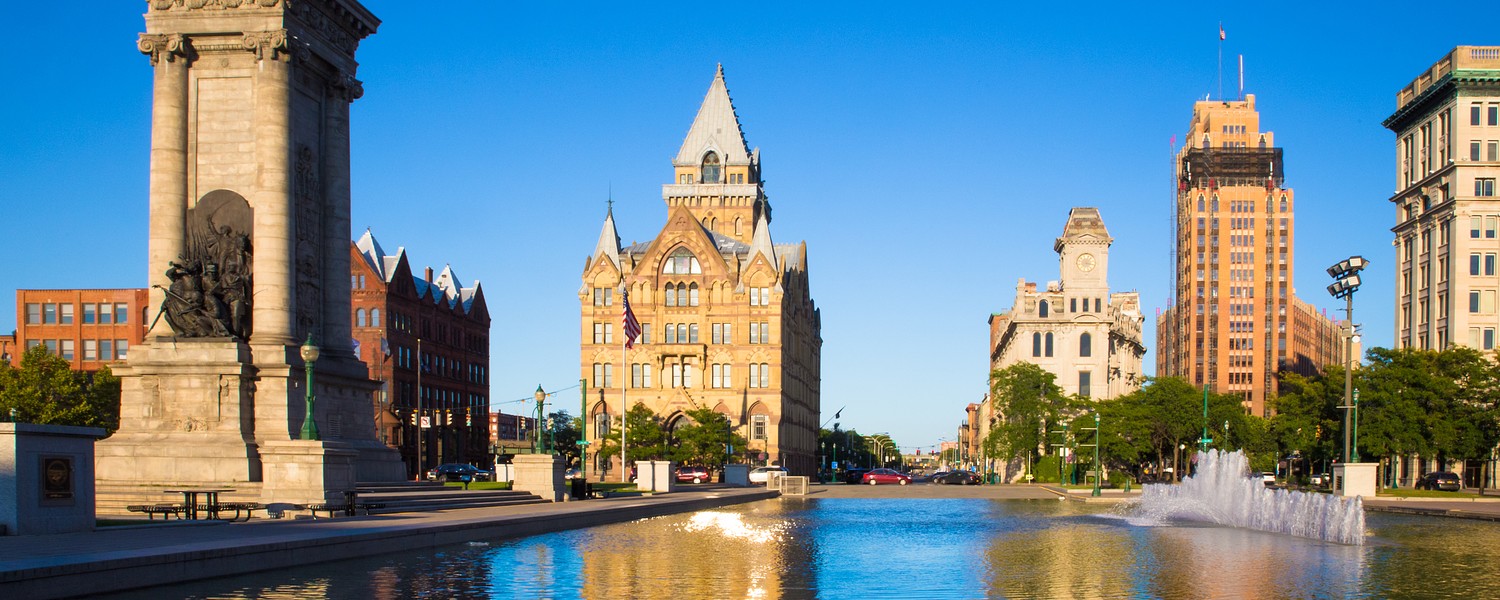
Provided by:
littlenySTOCK/Shutterstock.com

Our travel guides are free to read and explore online. If you want to get your own copy, the full travel guide for this destination is available to you offline* to bring along anywhere or print for your trip.
*this will be downloaded as a PDF.Price
€4,95
The City
The guide was updated:
Over the past 200 years, Syracuse has been many things: the nation's top producer of salt, a thriving industrial city, and a major academic and cultural center. One thing it has never been is dull.
Salt production began in the late 1700s and increased drastically with the opening of the Erie Canal in 1825. It waned around the end of the American Civil War and gave way to industrial manufacturing. Syracuse is still known as the 'Salt City' for providing most of the salt used in the United States in the 1800s.
Central New York's Native American heritage is evidenced by the names of its towns. Additionally, Syracuse has attracted immigrants from all over the world, and the tableau of the city is painted with the rich culture of these people that can be seen with a stroll through one of the city's many villages, such as Little Italy or Tipperary Hill. Although history and tradition are important to Syracusans, this is not a city that lives in its past. It has grown into a vibrant academic and cultural center with the continued growth of Syracuse University, a major research university with nationally recognized athletic programs, and Upstate Medical University. Work from local artists is celebrated and can be found in the city's many art galleries as well as in some local shops.
Parents and their children can find exciting activities at the Everson Museum of Art, Rosamond Gifford Zoo, The MOST (Milton J. Rubenstein Museum of Science and Technology), and Erie Canal Museum, along with the Landmark Theater, Syracuse Stage, and Armory Square with its many fine restaurants, taverns, and nightclubs.
Salt production began in the late 1700s and increased drastically with the opening of the Erie Canal in 1825. It waned around the end of the American Civil War and gave way to industrial manufacturing. Syracuse is still known as the 'Salt City' for providing most of the salt used in the United States in the 1800s.
Central New York's Native American heritage is evidenced by the names of its towns. Additionally, Syracuse has attracted immigrants from all over the world, and the tableau of the city is painted with the rich culture of these people that can be seen with a stroll through one of the city's many villages, such as Little Italy or Tipperary Hill. Although history and tradition are important to Syracusans, this is not a city that lives in its past. It has grown into a vibrant academic and cultural center with the continued growth of Syracuse University, a major research university with nationally recognized athletic programs, and Upstate Medical University. Work from local artists is celebrated and can be found in the city's many art galleries as well as in some local shops.
Parents and their children can find exciting activities at the Everson Museum of Art, Rosamond Gifford Zoo, The MOST (Milton J. Rubenstein Museum of Science and Technology), and Erie Canal Museum, along with the Landmark Theater, Syracuse Stage, and Armory Square with its many fine restaurants, taverns, and nightclubs.


